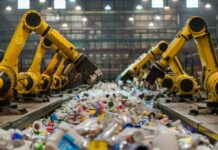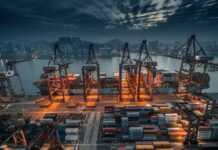The European Union (EU) is actively working on revising its regulations concerning packaging and packaging waste to align with its ambitious goal of establishing a low-carbon circular economy. Historically, the EU’s approach to packaging oversight has been relatively lenient, but this is about to change with the introduction of the proposed Packaging and Packaging Waste Regulation (PPWR). The impending EU parliamentary elections in June 2024 have added a sense of urgency to this process, as PPWR must be agreed upon before that date to prevent having to start over with new Members of the European Parliament (MEPs).
PPWR encompasses a range of critical measures aimed at achieving its objectives. These include ensuring that all packaging is recyclable by 2030, with large-scale recycling expected by 2035. The regulation also encourages the use of recycled materials in new plastic packaging by 2030 and 2040 to promote a circular economy. Additionally, certain types of packaging must be reusable or enable refill options by 2030 and 2040, while some forms of packaging will face bans to reduce waste. Furthermore, PPWR sets a target of achieving a 15% reduction per capita in packaging waste by 2040 compared to 2018 levels.
To achieve its waste reduction goals, PPWR employs a multifaceted approach. Banning specific products will contribute to waste reduction, as will mandating the minimization of packaging weight and volume without compromising functionality. However, it is expected that the reuse and refill regulations will have the most significant impact. The success of these regulations will depend on various factors, including the established targets, the number of times each packaging piece can be reused, and the weight comparison between reusable and single-use packaging.
Overall, the combined measures of PPWR are projected to reduce EU packaging waste by 15% per person by 2040, compared to 2018 levels.
Another crucial aspect of PPWR is its emphasis on reducing the use of plastic made from fossil fuels in EU plastic packaging. Recycled plastic will gradually replace virgin plastic in packaging production, with targets set for the percentage of recycled content in plastic packaging. By 2030, EU plastic packaging must contain 10-35% recycled content, increasing to 50-65% by 2040. This shift will transform the composition of EU plastic packaging, favoring recycled plastic over virgin plastic by 2040. However, implementing a fully functional recycling system presents its own set of challenges that require careful attention to detail.
Despite its potential benefits, there remains significant uncertainty surrounding the successful implementation of PPWR. While the EU Commission has proposed the regulation, it is still under review and subject to potential amendments by the EU Parliament and Council. The diversity of opinions within Parliament and changes in the Council Presidency further complicate the process. Nevertheless, there is a substantial political will to advance this regulation, which may be enough to push it forward.
The packaging industry is currently grappling with uncertainty, resulting in delayed decisions and increased risk. Recyclers are unsure about scaling up operations due to the uncertain volume of material they may process. Packaging producers are contemplating adjustments to their product range and research and development (R&D) investments, while forecasts regarding the allocation of virgin polymer to packaging customers pose additional challenges.
The success or failure of PPWR could have far-reaching implications, potentially serving as a model for other countries’ legislation. Consequently, the global packaging industry is closely monitoring the outcome of this regulation as it awaits clarity on the horizon.




























